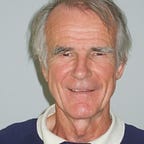Exercise — the prehistory
The strength and mobility of early man was not developed through structured programmes, methods, or schedules, but rather was forged by the daily, instinctive, necessity-driven practice of highly practical and adaptable movement skills. Today, the few hunter-gatherer tribes which still exist around the world would have no idea what “primal fitness” or a “caveman workout” is, as this kind of “exercise” remains deeply ingrained in their everyday lives.
Learning from the past
Hunter-gatherers regularly engage in various forms of physical activity, as survival depends on being able to procure food, build shelter, evade dangerous animals, etc
Here are some general characteristics of the physical activity patterns of hunter-gatherers:
- A lot of light to moderate activity such as walking, carrying, etc. On average five to 15 miles daily.
- Hard days are typically followed by an easier day.
- Occasional intermittent bursts of moderate-to-high level intensity exercise with intervening periods of rest and recovery.
- Rotation among many different forms of exercise, such as strength training (e.g., lifting stones, carrying logs), endurance training, climbing, etc.
- Dancing often performed as a part of rituals and celebrations.
- Primitive populations usually hunt and play in groups, rarely alone.
- Ample time for rest, sleep, and recovery.
Translating this to “Westernised” society
As I mentioned last week, it would seem logical that trying to replicate such a regime would give us the best physical health for which our evolution designed us. A paper from New Orleans last year discussed this. “A hunter-gatherer exercise prescription to optimize health and well-being in the modern world”1
The authors, O’Keefe and Lavie, reckon that the average number of daily steps taken by primitive man and woman would have been about 17,000 (c. eight miles) compared to about 5,000 for the typical US citizen today. They note the need for bursts of strenuous activity.
Our level of cardiorespiratory fitness is the best predictor of how long we will live — better than blood pressure, body mass index, being diabetic, blood cholesterol or even cigarette smoking. Only advancing age is better at predicting how long we have left to us. The Copenhagen City Heart Study found that those who self-identified as runners had a 6 year increase in life expectancy. Non-runners who performed light, moderate or heavy exercise had increases in life expectancy of 2.8, 4.5 and 5.5 years respectively compared with sedentary people.
Strength training also increases lifespan
O’Keefe and Lavie also note that primitive people had to perform a very diverse range of tasks requiring muscular effort — constructing, climbing, carrying, butchering, leaping, digging, picking etc. Resistance training for today’s people has been shown to decrease the risk of cardiovascular diseases and to extend life — with a reduction in age-related all-cause mortality of up to 65%.
What about fun?
Playful interactivity with others is a feature of human behaviour. The evidence is that taking exercise while physically interacting with others has more beneficial effects that solitary exertions. Dancing, badminton, tennis and soccer seem to do us more good than swimming, cycling and running on our own. Outdoor exercise reduces stress levels and improves mood. Greenery, trees and bodies of water may also increase adherence to physical activity regimes.
Putting it all together
There you have it then. Just follow the lifestyle for which we evolved. Plenty of low to medium level activity — walking etc — bursts of more vigorous exertion — high interval training — a modicum of resistance training — weights, press ups — and as much of all this as possible outside with other people!
- O’Keefe E, Lavie C. A hunter-gatherer exercise prescription to optimize health and well-being in the modern world. J Sci Sport Exerc Jan 2021
